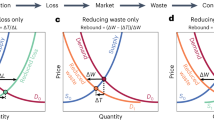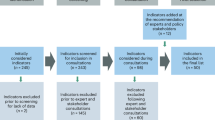Abstract
The recent development of true cost accounting (TCA) methodologies by various organizations has helped increase transparency in the food sector, but has also made it difficult to compare the results obtained through different methodologies. Here we review major TCA methodologies across five functional units that their assessment framework(s) apply to—namely product, organization, system, geography and investment. Our results show that the bulk of existing frameworks apply to products and/or organizations. According to publicly available documents and case studies published by the framework proponents, we found measurements of externality/dependency, the inclusion of economic, environmental and social effects, as well as the use of comparable metrics to be areas of general consensus; suggested indicators, monetization and aggregation emerged as areas of general divergence. The differences between TCA methodologies identified in this study indicate that collaboration between frameworks is key to their harmonization, ultimately making results more comparable and facilitating engagement in TCA.
This is a preview of subscription content, access via your institution
Access options
Access Nature and 54 other Nature Portfolio journals
Get Nature+, our best-value online-access subscription
$29.99 / 30 days
cancel any time
Subscribe to this journal
Receive 12 digital issues and online access to articles
$119.00 per year
only $9.92 per issue
Buy this article
- Purchase on Springer Link
- Instant access to full article PDF
Prices may be subject to local taxes which are calculated during checkout


Similar content being viewed by others
References
Uwizeye, A. et al. Nitrogen emissions along global livestock supply chains. Nat. Food 1, 437–446 (2020).
de Buhr, E. & Gordon, E. Bitter Sweets: Prevalence of Forced Labour & Child Labour in the Cocoa Sectors of Côte d’Ivoire & Ghana (Tulane University & Walk Free Foundation, 2018); https://cocoainitiative.org/wp-content/uploads/2018/10/Cocoa-Report_181004_V15-FNL_digital.pdf
Cawley, J. & Meyerhoefer, C. The medical care costs of obesity: an instrumental variables approach. J. Health Econ. 31, 219–230 (2012).
Baker, L. et al. Prospects for the true cost accounting of food systems. Nat. Food 1, 765–767 (2020).
TCA Inventory (Global Alliance for the Future of Food, 2020); https://airtable.com/shr3eH7gXan4SqHxB/tblZcPfh1SxT2ab3E/viwhvoFXlmP9gHg58
True Cost Accounting for Food, Farming & Finance (TCA-FFF) (Eosta, Soil & More, EY, Triodos Bank, & Hivos, 2017); https://tca2f.org/wp-content/uploads/2019/11/tca-fff-report.pdf
A Roadmap for True Pricing (True Price, 2019; https://trueprice.org/a-roadmap-for-true-pricing/
Olam International Limited Annual Report 2019 (Olam Group, 2020); https://www.olamgroup.com/content/dam/olamgroup/investor-relations/ir-library/annual-reports/annual-reports-pdfs/olam-annual-report-fy19_strategy_report.pdf#page=137
Social Impact of Meat Extended Shelf Life Solutions: Corbion Learning Journey (Product Social Impact Assessment Partnership, 2019); https://product-social-impact-assessment.com/wp-content/uploads/2021/01/19-001-Pre-Corbion-Case-RT-product-social-metrics-2019_25_09-1.pdf
Fitzpatrick, I. et al. The Hidden Cost of UK Food (Sustainable Food Trust, 2019); https://sustainablefoodtrust.org/wp-content/uploads/2013/04/Website-Version-The-Hidden-Cost-of-UK-Food.pdf
White, S. A TEEBAgriFood Analysis of the Malawi Maize Agri-food System (Future of Food, 2019); https://futureoffood.org/wp-content/uploads/2021/01/GA_TEEB_MalawiMaize201903.pdf
Baltussen, W. et al. Valuation of Livestock Eco-Agri-Food Systems: Poultry, Beef and Dairy: Executive Summary (Wageningen University & Research, 2016); https://research.wur.nl/en/publications/valuation-of-livestock-eco-agri-food-systems-poultry-beef-and-dai-2
Pharo, P. et al. Growing Better: Ten Critical Transitions to Transform Food and Land Use (Food and Land Use Coalition, 2019); https://www.foodandlandusecoalition.org/wp-content/uploads/2019/09/FOLU-GrowingBetter-GlobalReport.pdf
Ritchie, H. & Roser, M. Environmental Impacts of Food Production (OurWorldInData, 2020); https://ourworldindata.org/environmental-impacts-of-food
Notarnicola, B. et al. Environmental impacts of food consumption in Europe. J. Clean. Prod. 140, 753–765 (2017).
Dixon, J. & Gulliver, A. Farming Systems and Poverty: Improving Farmers’ Livelihoods in a Changing World (World Bank, 2001); https://documents.worldbank.org/en/publication/documents-reports/documentdetail/126251468331211716/farming-systems-and-poverty-improving-farmers-livelihoods-in-a-changing-world
Draft TEEB for Agriculture and Food: Operational Guidelines for Business (Capitals Coalition, 2020); https://capitalscoalition.org/wp-content/uploads/2020/08/DRAFT-TEEBAgriFood-Operational-Guidelines.pdf
Lord, S. Valuing the Impact of Food: Towards Practical and Comparable Monetary Valuation of Food System Impacts (FoodSIVI, 2020); https://foodsivi.org/wp-content/uploads/2020/06/Valuing-the-impact-of-food-Report_Foodsivi.pdf
TEEB for Agriculture & Food: Scientific and Economic Foundations Report (The Economics of Ecosystems and Biodiversity, 2018); http://teebweb.org/wp-content/uploads/2018/11/Foundations_Report_Final_October.pdf
Connecting Finance and Natural Capital: a Supplement to the Natural Capital Protocol (Capitals Coalition, 2018); https://capitalscoalition.org/guide_supplement/finance-sector-supplement/
Natural Capital Protocol – Apparel Sector Guide (Capitals Coalition, 2016); https://capitalscoalition.org/guide_supplement/apparel-sector-guide/
Rusman, A. et al. Cocoa Farmer Income: the Household Income of Cocoa Farmers in Côte d’Ivoire and Strategies for Improvement (Impact Institute, 2018); https://www.impactinstitute.com/wp-content/uploads/2018/10/Cocoa-farming-income-Fair-trade.pdf
Fobelets, V., Rusman, A. & de Groot Ruiz, A. Assessing Coffee Farmer Household Income (Impact Institute, 2017); https://www.impactinstitute.com/wp-content/uploads/2018/05/Assessing_Coffee_Farmer_Household_Income_Report_2017_updated.pdf
Pigou, A. The Economics of Welfare (Macmillan, 1924).
Marshall, A. Principles Of Economics edn 8 (Macmillan, 1920).
Serafeim, G., Zochowski, T. R. & Downing, J. Impact-Weighted Financial Accounts: the Missing Piece for an Impact Economy (Harvard Business School, 2019); https://www.hbs.edu/impact-weighted-accounts/Documents/Impact-Weighted-Accounts-Report-2019_preview.pdf
Essential Guide to Natural and Social Capital Accounting (Accounting for Sustainability, 2016); https://www.accountingforsustainability.org/en/knowledge-hub/guides/Natural-social-capital.html
Stiglitz, J. E., Fitoussi, J. & Durand, M. Beyond GDP: Measuring What Counts for Economic and Social Performance (OECD, 2018); https://www.oecd-ilibrary.org/economics/beyond-gdp_9789264307292-en
B Impact Assessment (B Analytics, 2021); https://bimpactassessment.net/
Framework for Inclusive Capitalism (Coalition for Inclusive Capitalism, 2021); https://www.coalitionforinclusivecapitalism.com/wp-content/uploads/2021/02/The-Framework-for-Inclusive-Capitalism-1.pdf
The (Sustainable) Business Case for Natural Capital Valuation (Cambridge Institute for Sustainability Leadership, 2013); https://www.cisl.cam.ac.uk/resources/publication-pdfs/sabmiller-summary-nov-2013.pdf/view
Bass, R. et al. Methodology for Standardizing and Comparing Impact Performance (Global Impact Investing Network, 2020); https://thegiin.org/assets/Methodology%20for%20Standardizing%20and%20Comparing%20Impact%20Performance_webfile.pdf
Impact Valuation (GIST Advisory, 2021); https://www.gistimpact.com/impactvaluation
How Investors Manage Impact (Impact Management Project, 2021); https://impactmanagementproject.com/impact-management/how-investors-manage-impact/
Barbier, E. B. et al. Inclusive Wealth Report 2018 (UN Environment Programme, 2018); https://www.unep.org/resources/report/inclusive-wealth-report-2018
Framework for Impact Statements (Impact Institute, 2019); https://www.impactinstitute.com/framework-for-impact-s
Integrated Reporting (International Integrated Reporting Council, 2021); https://integratedreporting.org/wp-content/uploads/2021/01/InternationalIntegratedReportingFramework.pdf
ISO 14040:2006: Environmental Management — Life Cycle Assessment — Principles and Framework (International Organization for Standardization, 2006); https://www.iso.org/standard/37456.html
Natural Capital Protocol (Natural Capital Coalition, 2016); http://www.naturalcapitalcoalition.org/protocol
Net Positive Methodology (Net Positive Project, 2019); https://static1.squarespace.com/static/5af56b9436099b397b0c0ec7/t/5c5d626d652deab29331e6c8/1549623920191/Net+Positive+Project_User+Guide_Jan+2019_Slides+for+Web.pdf
Noble, J., O’Flynn, P. & Kazimirski, A. Understanding Impact: How to Use Your Theory of Change to Develop a Measurement and Evaluation Framework (New Philanthropy Capital, 2020); https://www.thinknpc.org/resource-hub/understanding-impact/
Serafeim, G. & Trinh, K. A Framework for Product Impact-Weighted Accounts (Harvard Business School, 2020); https://www.hbs.edu/faculty/Pages/item.aspx?num=57580
Measuring the Social Impact of Corporate Investments: Social Impact Measurement Model (Deloitte, 2021); https://www2.deloitte.com/us/en/pages/consulting/solutions/corporate-social-impact-measurement-metrics.html
Social & Human Capital Protocol (Capitals Coalition; 2019); https://capitalscoalition.org/capitals-approach/social-human-capital-protocol/
Nicholls, J. et al. A Guide to Social Return on Investment (Social Value UK, 2012); https://socialvalueuk.org/resource/a-guide-to-social-return-on-investment-2012/
Ecosystem Accounting (System of Environmental Economic Accounting, 2021); https://seea.un.org/ecosystem-accounting
Assessing Your Total Impact (PwC, 2015); https://www.pwc.co.uk/services/sustainability-climate-change/total-impact.html
Total Value: Impact Valuation to Support Decision-Making (EY, 2016); https://tca2f.org/wp-content/uploads/2019/09/ey-total-value-impact-valuation-to-support-decision-making.pdf
TruCost’s Valuation Methodology (TruCost, 2015); https://gabi.sphera.com/fileadmin/GaBi_Databases/Thinkstep_Trucost_NCA_factors_methodology_report.pdf
Principles for True Pricing (True Price, 2020); https://trueprice.org/principles-for-true-pricing/
A New Vision of Value: Connecting Corporate and Societal Value Creation (KPMG, 2014); https://assets.kpmg/content/dam/kpmg/pdf/2014/10/a-new-vision-of-value-v1.pdf
WICI Intangibles Reporting Framework (World Intellectual Capital/Assets Initiative, 2016); https://www.wici-global.com/wirf/WICI_Intangibles_Reporting_Framework_v1.0.pdf
Impact Statement General Paper (Value Balancing Alliance, 2021); https://www.value-balancing.com/_Resources/Persistent/2/6/e/6/26e6d344f3bfa26825244ccfa4a9743f8299e7cf/20210210_VBA%20Impact%20Statement_GeneralPaper.pdf
de Adelhart Toorop, R. & de Groot Ruiz, A. Integrated Profit & Loss Assessment Methodology (IAM) (Impact Institute, 2020); https://www.impactinstitute.com/ipl-assessment-methodology/
Principles of Integrated Capitals Assessment (Capitals Coalition, 2021); https://capitalscoalition.org/wp-content/uploads/2021/01/Principles_of_integrated_capitals_assessments_final.pdf
Impact Report 2020 (ABN AMRO, 2021); https://assets.ctfassets.net/1u811bvgvthc/7imjY5fyavgsH2nwwjH2I5/236210cbd95ee42592e864c8fbcefa64/ABN_AMRO_____Impact_Report_2020.pdf
Measuring and Managing Total Impact: a New Language for Business Decisions (PwC, 2013); https://www.pwc.com/gx/en/sustainability/publications/total-impact-measurement-management/assets/pwc-timm-report.pdf
Rusman, A. et al. The True Cost of Cocoa: Tony’s Chocolonely 2018 Progress Report (True Price, 2018); https://trueprice.org/wp-content/uploads/2018/11/The-True-Price-of-Cocoa.-Progress-Tonys-Chocolonely-2018.pdf
Social and Human Capital Accounting (Accounting for Sustainability, 2017); https://www.accountingforsustainability.org/en/knowledge-hub/guides/social-and-human-capital.html
Galgani, P. et al. Monetization Factors for True Pricing (True Price, 2020); https://trueprice.org/monetisation-factors-for-true-pricing/
Serafeim, G. & Trinh, K. Accounting for Product Impact in the Airlines Industry (Harvard Business School, 2020); https://www.hbs.edu/impact-weighted-accounts/Documents/Accounting%20for%20Product%20Impact%20in%20the%20Airlines%20Industry.pdf
ISO 14044:2006: Environmental Management — Life Cycle Assessment — Requirements and Guidelines (International Organization for Standardization, 2006); https://www.iso.org/standard/38498.html
Nakamura, S. & Nansai, K. in Special Types of Life Cycle Assessment (ed. Finkbeiner, M.) (Springer, 2016).
ISO 14008:2019: Monetary Valuation of Environmental Impacts and Related Environmental Aspects (International Organization for Standardization, 2019); https://www.iso.org/standard/43243.html
Sticky Money: Recognising the Total Value Created by Australian Co-operatives and Mutuals (EY, 2014); https://www.aph.gov.au/DocumentStore.ashx?id=56a327ad-8349-41c4-a809-49d9495c17a1&subId=514555
Valuing Our Total Impact - Our Results in Detail (PwC, 2017); https://www.pwc.co.uk/who-we-are/our-purpose/performance/valuing-our-total-impact.html
Eigenraam, M. et al. Applying the TEEBAGRIFOOD Evaluation Framework - Overarching Implementation Guidance (Global Alliance for the Future of Food, 2020); https://futureoffood.org/wp-content/uploads/2021/01/GA_TEEBAgriFood_Guidance.pdf
NPC Case Studies: Impact Management Practice in Youth Employment (Impact Management Project, 2017); https://impactmanagementproject.com/wp-content/uploads/Case-Studies-in-Youth-Employment.pdf
Loughman. E. B Impact Assessment (B Analytics, 2012); https://bimpactassessment.net/case-studies/elissa-loughman
Schaafsma, M. & Cranston, G. E.Valu.A.Te Practical Guide (Cambridge Institute for Sustainability Leadership, 2013); https://www.cisl.cam.ac.uk/resources/publication-pdfs/evaluate-practical-guide-nov-2013-new.pdf
Impact Statement Focus: Environment (Value Balancing Alliance, 2021); https://www.value-balancing.com/_Resources/Persistent/8/a/f/f/8aff8d622d5a09f9af18a062a71b9a3201f2ea3e/20210302_VBA%20Method_paper_Environmentals.pdf
Value-to-Society: Measurement and Monetary Valuation of BASF’s Impacts in Society (BASF, 2018); https://www.basf.com/global/en/who-we-are/sustainability/we-drive-sustainable-solutions/quantifying-sustainability/value-to-society.html
KPMG True Value Case Study: Volvo Group (KPMG, 2015); https://assets.kpmg/content/dam/kpmg/pdf/2015/10/volvo-group-kpmg-true-value-case-study.pdf
Gundimeda, H. Application of the TEEBAgriFood Evaluation Framework to the Wheat Value Chain in Northern India (TEEB, 2019); http://teebweb.org/wp-content/uploads/2020/12/Application-of-the-TEEB-Agrifood-framework-to-the-wheat-value-chain-in-Northern-India-LC-FINAL.pdf
Kurth, T. et al. The True Cost of Food (BCG, 2020); https://www.bcg.com/publications/2020/evaluating-agricultures-environmental-costs
Brander, L. & Schuyt, K. Benefits Transfer: the Economic Value of World’s Wetlands (TEEB, 2010); http://www.teebweb.org/wp-content/uploads/2013/01/The-economic-value-of-the-worlds-wetlands.pdf
La Notte, A. et al. Physical and Monetary Ecosystem Service Accounts for Europe: a Case Study for In-Stream Nitrogen Retention (SEEA, 2017); https://seea.un.org/content/physical-and-monetary-ecosystem-service-accounts-europe-case-study-stream-nitrogen-retention
Hoekstra, R. Replacing GDP by 2030: Towards a Common Language for the Well-Being and Sustainability Community (Cambridge Univ. Press, 2019).
Measuring and Managing Total Impact: Strengthening Business Decisions for Business Leaders - Food & Beverage Scenario (PwC, 2017); https://www.pwc.com/gx/en/services/sustainability/total-impact-measurement-management/measuring-and-managing-total-impact-strengthening-business-decisions-for-business-leaders-food-and-beverage-scenario.html
MN: GIIN Initiative for Institutional Impact Investment (Global Impact Investing Network, 2018); https://thegiin.org/mn
Social Impact Measurement Model (SIMM) Case Study: Predicting Changes in Social Metrics in Huntsville, Alabama (Deloitte, 2019); https://www2.deloitte.com/content/dam/Deloitte/us/Documents/process-and-operations/us-cons-social-impact-measurement-model-infographic.pdf
Varoucha, E. et al. Guide for Funders to Assess and Value Impact (Impact Institute, 2020); https://www.impactinstitute.com/guide-for-funders-to-assess-and-value-impact/
Natural Capital Protocol - Food and Beverage Sector Guide (Natural Capital Coalition, 2016); https://naturalcapitalcoalition.org/wp-content/uploads/2016/09/NCC_FoodAndBeverage_WEB_2016-07-12.pdf
Wang, P. et al. Estimates of the social cost of carbon: a review based on meta-analysis. J. Clean. Prod. 209, 1494–1507 (2019).
Freiberg, D. et al. Accounting for Organizational Employment Impact (Harvard Business School, 2020); https://www.hbs.edu/impact-weighted-accounts/Documents/Accounting%20for%20Organizational%20Employment%20Impact_HBS%20Working%20Paper.pdf
IFRS Foundation Trustees Announce Next Steps in Response to Broad Demand for Global Sustainability Standards (IFRS, 2021); https://www.ifrs.org/projects/work-plan/sustainability-reporting/
El-Hage Scialabba, N. & Obst, C. in True Cost Accounting for Food: Balancing the Scale (eds Gemmill-Herren, B. et al.) (Routledge, 2021).
Watson, B. The troubling evolution of corporate greenwashing. The Guardian (20 August 2016); https://www.theguardian.com/sustainable-business/2016/aug/20/greenwashing-environmentalism-lies-companies
Baldock, C. et al. Yarra Valley Water Integrated Profit and Loss (IP&L) Report (Yarra Valley Water, 2016); https://media-2.yvw.com.au/inline-files/Yarra%20Valley%20Water%20IPL_November%202016_v2_0.pdf
The Natural Capital Coalition and the Social & Human Capital Coalition Unite as the Capitals Coalition (Capitals Coalition, 2020); https://capitalscoalition.org/the-natural-capital-coalition-and-the-social-human-capital-coalition-unite-as-the-capitals-coalition/
Acknowledgements
This research was made possible through the support of the True Cost Accounting Accelerator, a project of the Global Alliance for the Future of Food.
Author information
Authors and Affiliations
Corresponding author
Ethics declarations
Competing interests
R.d.A.T., J.B. and A.d.G.R. are currently employed by the Impact Institute, which developed the IP&L methodology mentioned in this work. They are also involved in the development of the True Price methodology. Additionally, A.d.G.R. worked on case studies for TEEBAgriFood, also cited in this work. J.Y. and M.W. declare no competing interests.
Additional information
Peer review information Nature Food thanks Isabel Hoffmann and Carl Obst for their contribution to the peer review of this work.
Publisher’s note Springer Nature remains neutral with regard to jurisdictional claims in published maps and institutional affiliations.
Supplementary information
Supplementary Information
Supplementary Table 1.
Rights and permissions
About this article
Cite this article
de Adelhart Toorop, R., Yates, J., Watkins, M. et al. Methodologies for true cost accounting in the food sector. Nat Food 2, 655–663 (2021). https://doi.org/10.1038/s43016-021-00364-z
Received:
Accepted:
Published:
Issue Date:
DOI: https://doi.org/10.1038/s43016-021-00364-z
This article is cited by
-
Regionalized life-cycle monetization can support the transition to sustainable rural food waste management in China
Nature Food (2023)
-
An interactive model to assess pathways for agriculture and food sector contributions to country-level net-zero targets
Communications Earth & Environment (2023)
-
Low-carbon diets can reduce global ecological and health costs
Nature Food (2023)
-
Introducing the Food Value Framework (FVF) to empower transdisciplinary research and unite stakeholders in their efforts of building a sustainable global food system
Environment, Development and Sustainability (2023)
-
True cost accounting in agri-food networks: a German case study on informational campaigning and responsible implementation
Sustainability Science (2022)



